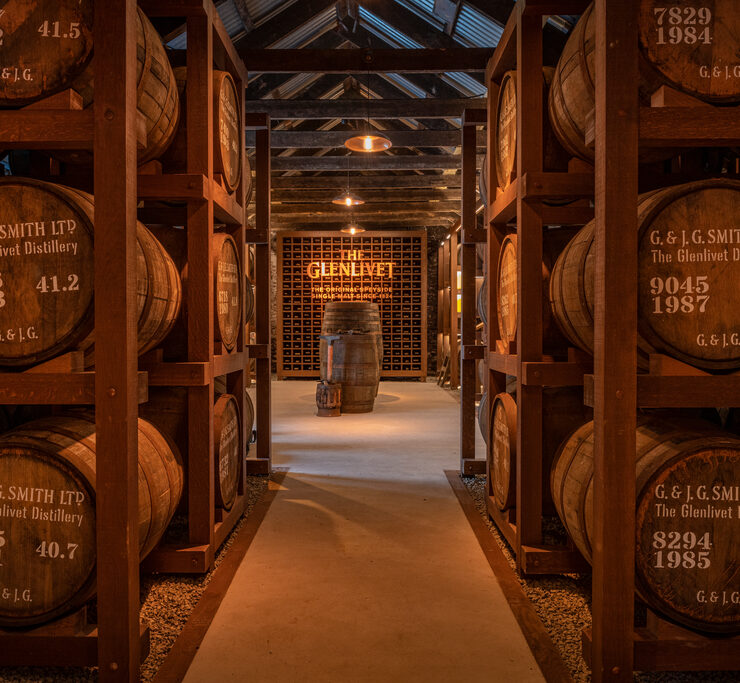
In the world of whisky, the terms single cask, double cask, and triple cask often leave enthusiasts pondering the nuances that distinguish these expressions. This guide aims to help clear up the cask conundrum by exploring the differences between single, double, and triple cask whisky types.
Defining single, double, and triple cask whisky
Before delving into how the flavours and aromas of single, double, and triple cask whiskies differ, it’s essential to understand the legal definitions of these terms. This can be tricky, as there is some ambiguity surrounding them due to producers using the definitions to describe bottling situations and using them interchangeably with other phrases.
In the simplest of terms, single, double, and triple cask whiskies can be defined as follows:
- Single cask: Whisky aged in one cask for a set period and bottled at cask strength.
- Double cask: Whisky matured in one cask and then transferred into a second cask.
- Triple cask: Whisky that undergoes maturation in three different casks before bottling.
However, with how scotch is made, it can still be described as a single cask when it has matured in two casks if they are the same type of whisky cask. It can also be labelled as a single cask if different whiskies are all matured in the same type of cask before being combined in another cask before bottling. The same is true for double cask or triple cask varieties where two or three whiskies from different origin casks are blended in an additional cask prior to being bottled.
What is single cask whisky?
Single cask whiskies are sometimes regarded as the purest and rarest whiskies. The whisky maturation process takes place in a single cask, offering a unique and unadulterated expression of the spirit. The limited quantity ensures exclusivity, and each bottle tells a story of its own, bearing the distinct characteristics imparted by the solitary cask it matured in.
For example, The Glenlivet’s 22-year-old whisky is aged in 1st fill ex-bourbon American oak barrels, resulting in flavours of orchard fruits, peach, toffee and vanilla.lso be labelled as a single cask if different whiskies are all matured in the same type of cask before being combined in another cask before bottling. The same is true for double cask or triple cask varieties where two or three whiskies from different origin casks are blended in an additional cask prior to being bottled.
What is double cask whisky?
Double cask whiskies, on the other hand, are a harmonious blend of flavours. They marry the characteristics of two different cask types, often resulting in a complex interplay of sweetness, spice, and depth. The art lies in the meticulous selection of casks and the blending process, creating a symphony of flavours that dance on the palate.
Our 12-year single malt is a delightful example of a double cask whisky. It’s first matured in European oak casks before being transferred to American oak casks that provide notes of vanilla and a distinctive smooth mouthfeel.
What is triple cask whisky?
Triple cask whiskies take complexity to another level. Maturing in three separate casks allows for a broad spectrum of flavour profiles to develop. The first cask may contribute sweetness, the second imparts depth, and the third introduces a subtle nuance.
The Glenlivet White Oak Reserve single malt scotch, for instance, gains sweet velvety notes from American white oak casks, while traditional oak and ex-sherry casks further contribute to the deep and complex nature of this whisky. This layered approach adds an intricate tapestry of flavours, making each sip a journey through various dimensions of taste.
Comparing characteristics of single, double, and triple cask whisky
When comparing these expressions, it’s crucial to consider personal preferences. Single cask whiskies boast individuality and purity, while double cask whiskies offer a balanced blend of diverse flavours. Triple cask whiskies, with their intricate profiles, appeal to those seeking a multifaceted tasting experience. Understanding the nuances will guide enthusiasts towards the whisky that resonates with their palate.
Nose
The nose of a single cask whisky is often bold and pronounced. It carries the pure essence of the spirit, with distinct aromas derived from the specific whisky cask it was matured in. Expect intense notes that can range from rich oak and vanilla to intricate fruit and floral undertones.
Double cask whiskies offer a complex olfactory experience. The nose is a harmonious blend of aromas from two different cask types, resulting in a balanced bouquet. You might detect a fusion of sweet and spicy notes, with layers of vanilla, caramel, and subtle hints of fruit.
Triple cask whiskies also present a multifaceted nose, with an amalgamation of aromas from three distinct casks. This complexity can include a combination of sweetness, depth, and nuanced undertones. The nose may reveal a diverse range of scents, from honey and dried fruits to subtle spices and oak.
Colour
The colour of a single cask whisky varies but can be deep and rich, reflecting the prolonged interaction with a singular cask. Single cask whisky hues range from golden amber to mahogany, showcasing the intensity of the whisky maturation process in one cask.
Double cask whiskies exhibit a colour spectrum that results from the marriage of spirits from two different casks. This can lead to a balanced colour profile, with shades of amber, caramel, and golden tones coming together to create an inviting visual experience.
Triple cask whiskies boast a diverse colour palette, embodying the influences of three separate casks. The colour may range from light gold to deep russet, showcasing the intricate interplay of the various cask types and their impact on the whisky’s appearance.
Palate
On the palate, single cask whiskies deliver a focused and intense experience. The flavours are concentrated, allowing the drinker to appreciate the unadulterated essence of the spirit. You may encounter a robust combination of oak, spices, and the unique characteristics imparted by the solitary cask.
Double cask whiskies offer a well-rounded palate with a balanced interplay of flavours. The marriage of two cask types contributes to a complex taste profile, where sweetness, spiciness, and depth harmonise seamlessly. Expect a nuanced journey through layers of vanilla, toffee, and subtle fruit notes.
The palate of a triple cask whisky is an intricate tapestry of taste. The influence of three different casks results in a dynamic tasting experience. From initial sweetness to mid-palate depth and a lingering finish, each sip unveils something new including honey, dried fruits, spices, and oak.
Finish
The finish of a single cask whisky is often long-lasting and impactful. It allows the drinker to savour the pure and unfiltered essence of the spirit. You may experience a lingering warmth accompanied by robust notes.
Double cask whiskies typically offer a well-balanced finish that reflects the marriage of flavours from two different casks. The lingering notes can be smooth and complex, with a combination of sweet, spicy, and oaky elements that leave a satisfying and memorable impression.
The finish of a triple cask whisky extends the complexity from the palate, with a prolonged and evolving fade where the intermingling flavours linger.
Is double cask better than single cask whisky?
The debate over whether double cask is superior to single cask whisky is subjective. Single cask enthusiasts appreciate the unfiltered essence of a lone barrel, while double cask aficionados savour the artistry in harmonising different cask influences. It ultimately boils down to personal taste.
Is single cask or triple cask whisky better?
Similarly, the choice between single cask and triple cask whisky hinges on individual preferences. Single cask enthusiasts appreciate the purity, whereas those seeking a more intricate journey may find satisfaction in the layers of complexity offered by triple cask expressions. There’s no definitive answer; it’s about discovering which dram best speaks to you.
What is cask finishing?
Cask finishing is a technique that elevates whiskies to new heights. It involves transferring the matured spirit from its original cask to another for a brief period, imparting additional flavours. Understanding cask finishing allows enthusiasts to appreciate the extra layers of complexity it brings to the final product, whether it’s a single, double, or triple cask whisky.
In summary, understanding the subtle yet compelling differences between single, double, and triple cask whiskies provides you with a roadmap to navigate the diverse and captivating world of these expressions. Each variant offers a unique journey, inviting whisky novices and connoisseurs alike to explore and appreciate the craftsmanship behind each sip.
To learn more about the science that plays a pivotal part in each and every bottle, take a look at our whisky guide or delve into what whisky is made from and what chill filtered whisky is. If you want to explore the characteristics of single, double, and triple cask whisky for yourself, our whisky cocktails will give you some inspiration for getting started.



